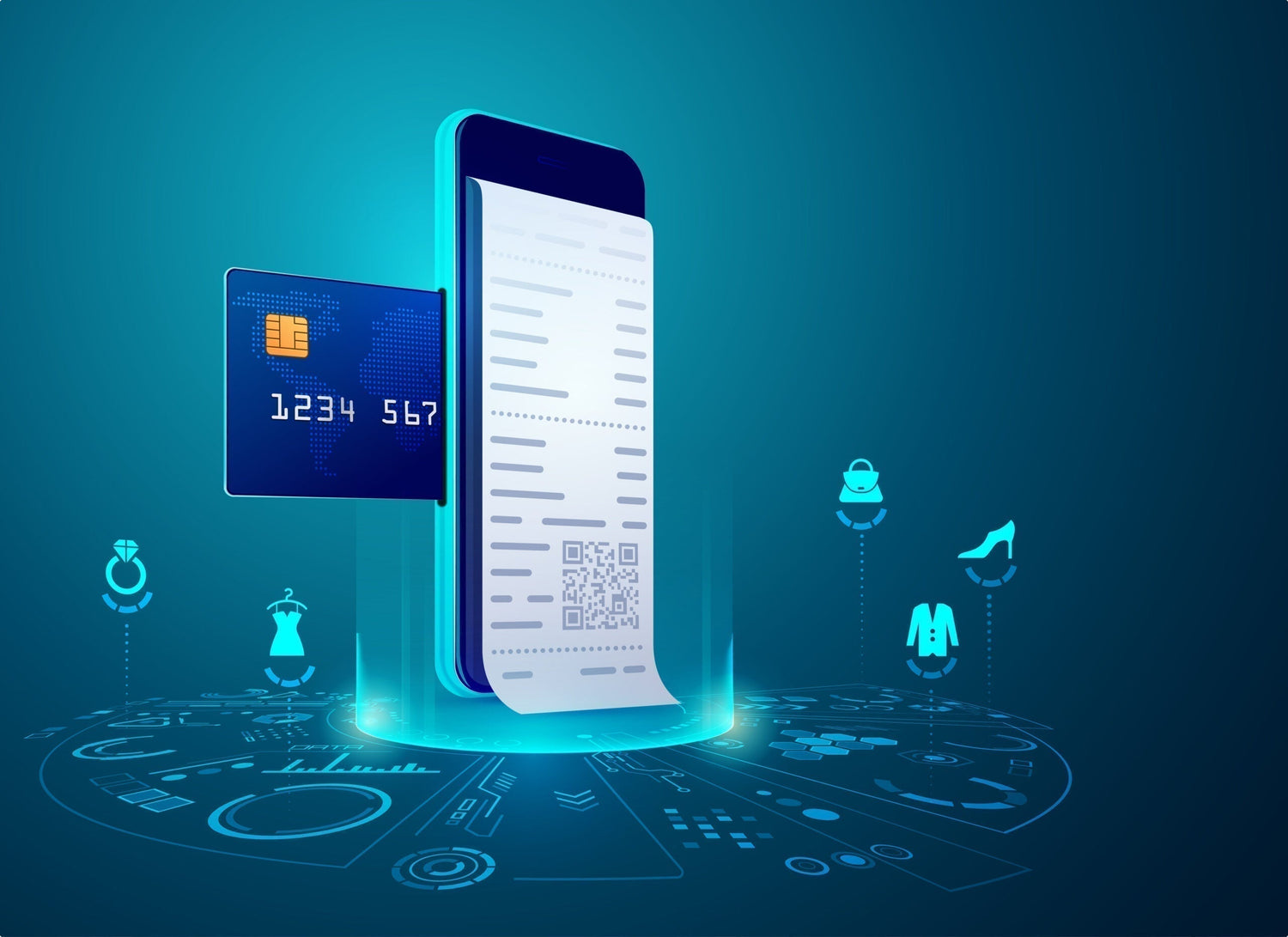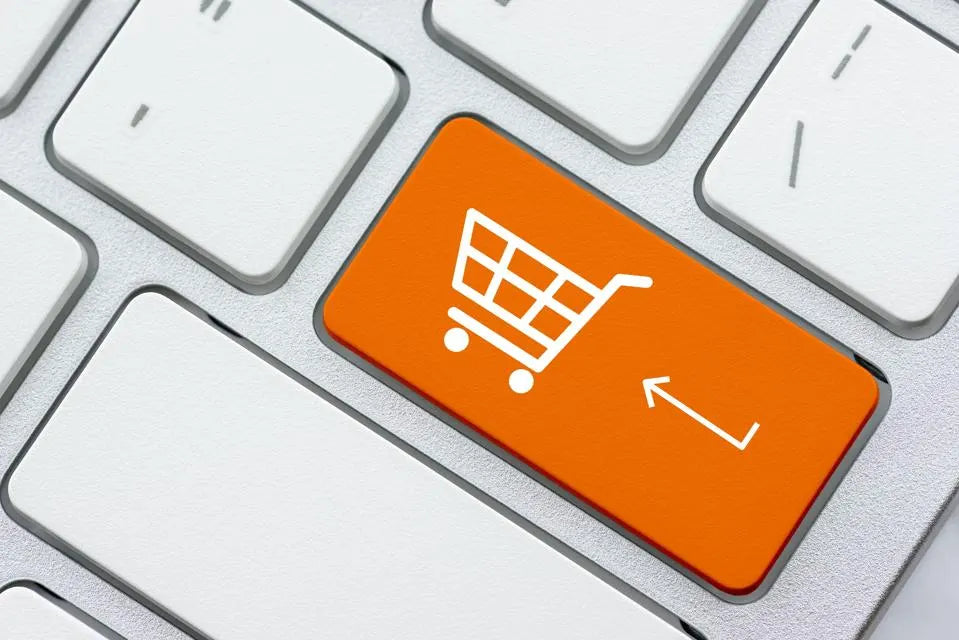The Current State of Ecommerce Payments
If you're steering the ship of an online business in the U.S., you're no stranger to the rapid evolution of payment methods. This isn't just about keeping up; it's about leading the charge in a dynamic market where consumer behavior and technology intersect. Here, we'll explore the most popular payment methods, delve into what's evolving, and provide you with actionable insights to ensure your ecommerce platform remains at the forefront of payment innovation.
Digital Wallets: Leading the Charge
Digital wallets have transcended from being a novel payment option to a fundamental part of the consumer's digital life. Platforms like Apple Pay, Google Pay, and PayPal are not just convenient; they represent a shift towards a more integrated, seamless shopping experience.

- Consumer Preference: Data from 2023 shows that over 50% of online transactions globally leverage digital wallets, with this figure expected to rise. The convenience of not having to enter card details repeatedly, combined with enhanced security through tokenization, has made digital wallets the go-to choice for many.
- Integration Tips: Ensure your ecommerce platform supports multiple digital wallet types. Mobile optimization is key here, as most transactions occur on smartphones. Also, consider the user interface; make the payment process as intuitive as possible to capitalize on this trend.
Credit and Debit Cards: The Evergreen Solution
Despite the digital wallet boom, credit and debit cards are still king in many transactions, particularly for larger purchases where consumers might prefer the familiarity and security of traditional methods.
- Evolving Dynamics: Contactless payments have become the norm, with projections indicating that by 2025, contactless transactions will account for nearly half of all card transactions. Virtual cards, offering a new layer of privacy and security for online shopping, are also on the rise.
- Strategy: While maintaining support for traditional card payments, consider introducing features like one-click payments or virtual card services. Educate your customers on the benefits of these innovations, such as enhanced fraud protection.
Buy Now, Pay Later (BNPL): A Game-Changer
Buy Now, Pay Later (BNPL) is a short-term financing option that allows consumers to make a purchase and pay for it in installments, often interest-free. Unlike traditional credit cards, BNPL services do not require an extensive credit check, making them accessible to a broader range of shoppers. These payments are usually split into equal parts (e.g., four biweekly payments) and are automatically deducted from the user’s bank account or card.
Why is BNPL Growing?
BNPL services have seen explosive growth, particularly among millennials and Gen Z, who prefer flexible, interest-free payment options over traditional credit cards. This method not only enhances affordability but also encourages higher spending by breaking down purchases into manageable payments.

Popular BNPL Providers
-
Affirm – Affirm offers installment plans with a focus on transparency, allowing users to split purchases into manageable payments over a set period, often ranging from a few months to a year or more, depending on the purchase size. Unlike traditional credit options, Affirm prides itself on having no hidden fees or compounding interest—users see exactly what they’ll pay upfront, including any interest (if applicable), which varies based on the merchant and creditworthiness.
-
Afterpay – Afterpay allows shoppers to pay in four equal, interest-free installments over six weeks, with 25% due upfront and the rest auto-deducted biweekly. It’s built for smaller purchases like fashion or beauty items and is widely available at retailers. No interest keeps it simple, but late fees apply if payments are missed. Afterpay’s no-credit-check approval makes it accessible for quick, everyday shopping without the burden of traditional credit.
-
Klarna – Klarna provides multiple BNPL options, like 'Pay in 4' interest-free over six weeks or extended financing with interest for larger buys like appliances. Its 'Pay in 30' lets you try before paying in full within a month. Flexible and widely partnered, it suits various needs, though interest may apply on longer plans based on credit.
-
Sezzle – Sezzle targets budget-conscious users with four interest-free payments over six weeks, requiring no hard credit check for approval. It’s ideal for small buys and offers payment rescheduling for flexibility. Popular with cost-sensitive shoppers, it encourages responsible spending, though late fees can hit if payments slip.
Strategic Insight for E-Commerce Managers
- Boost Conversions: BNPL attracts hesitant buyers by lowering the upfront cost barrier.
- Increase Average Order Value: Shoppers tend to spend more when given the option to split payments.
- Reduce Cart Abandonment: Offering BNPL at checkout can encourage customers to complete their purchases.
However, it’s essential to partner with reputable BNPL providers and clearly communicate terms to prevent misunderstandings and financial strain for consumers.
- Market Growth: The BNPL market is projected to soar, with transaction volumes expected to exceed $450 billion by 2026.
- Implementation: Partnering with BNPL providers can be complex. Look for ones that offer seamless integration with your checkout process, clear terms for consumers, and favorable conditions for your business. Highlight this option prominently, as it can significantly impact your conversion rates.
Cryptocurrencies: From Niche to Notable
Cryptocurrencies are infiltrating ecommerce payments as institutional buy-in grows—Visa processes crypto via USDC, PayPal supports Bitcoin, and banks like JPMorgan explore blockchain. This isn’t fringe anymore; it’s a signal of structural shifts in finance. By March 2025, crypto’s ecommerce share is small but rising, driven by high-net-worth users and cross-border transactions.
Adoption Challenges
Usage hovers below 5% of U.S. online shoppers, per 2024 data, but those who pay with crypto often drop big—think $1,000+ on luxury or tech. Volatility is brutal: Bitcoin fell 20% in a week last month. Scalability chokes adoption—Ethereum handles ~15 transactions/second versus Visa’s 1,700. Regulatory haze (SEC vs. Ripple, IRS tax rules) and energy debates (Bitcoin’s 200 TWh/year footprint) deter merchants. Most consumers still see it as investment, not currency.
Strategy for Adoption
Accept crypto only if you can stomach risk. Use Coinbase Commerce or BitPay to convert to USD instantly, dodging volatility. Fees bite—Ethereum’s $10-$50 gas spikes vs. Bitcoin’s $1-$5 norm. Target crypto-rich niches (NFT buyers, privacy hawks) and market it hard—80% of merchants see sales lift post-adoption, per 2024 BitPay stats. Keep fiat options; crypto’s not ready to dominate. Understand your blockchain: Solana’s fast, cheap; Bitcoin’s secure, slow.
QR Code Payments: Gaining Ground
QR codes dominate China’s $6T mobile payment market (Alipay, WeChat) and now hit U.S. shores, up 100% in usage since 2021, per eMarketer. Contactless demand post-COVID and smartphone ubiquity (90% U.S. adults by 2025) fuel this. It’s not a gimmick—it’s infrastructure.

Consumer Behavior
QR shines for micro-transactions—$5-$25 range—where speed beats security obsession. Food trucks, pop-ups, and bars love it; 30% of Gen Z used it weekly in 2024, per PYMNTS. It’s not replacing cards (70% of sales) but carving a niche: instant, no NFC hardware needed. Privacy lags—apps track every scan. Adoption’s urban-heavy; rural uptake’s slow.
Business Application
Setup’s dirt-cheap: static QR via Venmo costs $0, dynamic via Square’s $10/month. No terminals, just a code. It’s 2-3 seconds faster than cards at checkout—vital for high-volume spots. Push it to under-35s; they’re 60% of users. Fraud’s low (under 1% of transactions), but phishing risks grow—educate staff. Pair with loyalty perks; 2024 data shows 15% sales bump when QR ties to rewards.
Evolving Trends to Watch
Real-Time Payments: The Acceleration of Cash Flow
Waiting days for payments to process is becoming a thing of the past. Real-time payments (RTP) are revolutionizing how eCommerce businesses manage cash flow by enabling instant fund transfers. This not only improves liquidity but also reduces financial uncertainty.
With RTP, businesses can fulfill orders faster, as payments are confirmed instantly. This eliminates the delays caused by traditional banking processes, making transactions smoother for both merchants and consumers. Additionally, real-time verification helps reduce chargebacks by flagging fraudulent transactions before funds are transferred.
How to Leverage RTP in Your Business:
- Integrate RTP-supporting payment solutions like FedNow® to enable instant transactions.
- Ensure your payment gateway supports real-time settlements without high transaction fees.
- Partner with fintech providers and banks to implement a secure and cost-effective RTP infrastructure.
Account-to-Account (A2A) Payments: Bypassing Intermediaries
Account-to-account (A2A) payments allow direct transfers between bank accounts, bypassing traditional credit card networks. This method significantly reduces processing costs while increasing security.
By eliminating third-party intermediaries, A2A payments lower transaction fees and the risk of fraud associated with stolen credit card data. They are also ideal for recurring payments, making them a strong alternative for subscription-based services and high-ticket purchases.
Implementing A2A Payments:
- Use fintech providers like Plaid, Tink, or Trustly to enable seamless direct bank transfers.
- Ensure compliance with Open Banking regulations to enhance security and transparency.
- Educate customers on the benefits of A2A payments, such as lower fees and enhanced fraud protection, to drive adoption.
Advanced Security with Biometric Authentication
Cyber threats continue to evolve, and traditional password-based security measures are no longer sufficient. Biometric authentication—using fingerprints, facial recognition, or behavioral biometrics—provides an additional layer of security while also offering a frictionless user experience.
How to Integrate Biometric Authentication:
- Enable biometric authentication within your mobile app for secure and seamless logins.
- Partner with payment providers like Apple Pay and Google Pay that support biometric verification.
- Offer alternative authentication methods to cater to all customer preferences.
AI-Powered Payment Optimization
Artificial Intelligence (AI) is transforming eCommerce payments in multiple ways, from fraud prevention to personalized payment experiences. AI-driven tools analyze vast amounts of transaction data in real time to detect fraud patterns, optimize payment routing, and suggest the best payment options based on user behavior.
Leveraging AI in Your Payment Strategy:
- Implement AI-powered fraud detection tools like Riskified, Forter, or Signifyd to minimize fraudulent transactions.
- Use AI-driven recommendation engines to personalize payment options, such as Buy Now, Pay Later (BNPL) services.
- Deploy AI chatbots to provide real-time payment assistance, helping customers resolve transaction issues instantly.
Final Thoughts: Adapting to the Future of Payments
As digital transactions continue to evolve, eCommerce managers must stay ahead of the curve by embracing new payment technologies. Implementing real-time payments, A2A transfers, biometric security, and AI-driven solutions can help businesses reduce costs, enhance efficiency, and build long-term customer trust.
By proactively adopting these innovations, businesses can not only keep up with industry trends but also gain a competitive edge in the rapidly changing eCommerce landscape.
Practical Tips for Ecommerce Managers
- Diversify Payment Options: Beyond just supporting multiple methods, understand the nuances of each to cater to different customer segments.
- Stay Tech-Savvy: Participate in tech forums, subscribe to payment tech newsletters, and engage with payment service providers to stay updated.
- Optimize for Checkout: A/B test different checkout flows, focusing on reducing steps, enhancing security cues, and ensuring mobile responsiveness.
- Educate Your Customers: Create content like blog posts or videos explaining new payment methods, their benefits, and how to use them safely on your site.
- Security is Paramount: Regularly update your security protocols. Consider certifications like PCI DSS compliance to reassure customers of your platform's safety.
- Monitor Trends: Use analytics to monitor which payment methods are gaining traction and adjust your strategy accordingly.
- Test and Learn: Roll out new payment methods on a trial basis on certain product lines or customer segments before a full-scale implementation.
Conclusion
Navigating the payment landscape in American ecommerce requires a blend of foresight, adaptability, and customer-centric innovation. By embracing these evolving payment methods and trends, you're not just keeping up; you're setting the pace for what's possible in online commerce. Ensure your platform is equipped to handle the diversity of today's consumer payment preferences, and you'll not only meet customer expectations but exceed them.
In 2025, the payment experience will be a defining factor in customer loyalty and business growth. Keep learning, adapting, and innovating in the realm of payments, and your ecommerce venture will be well-positioned for success in this ever-evolving digital marketplace.


